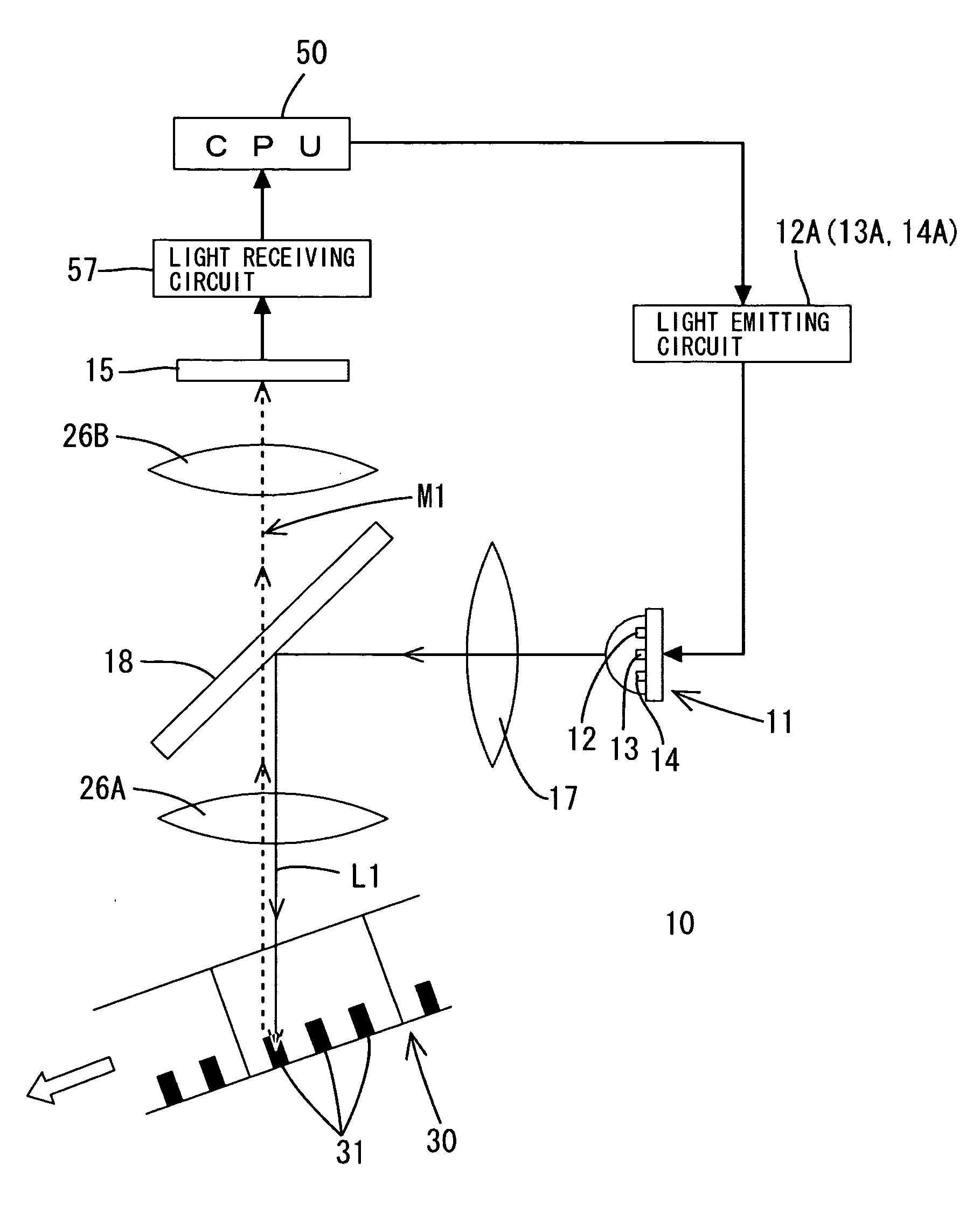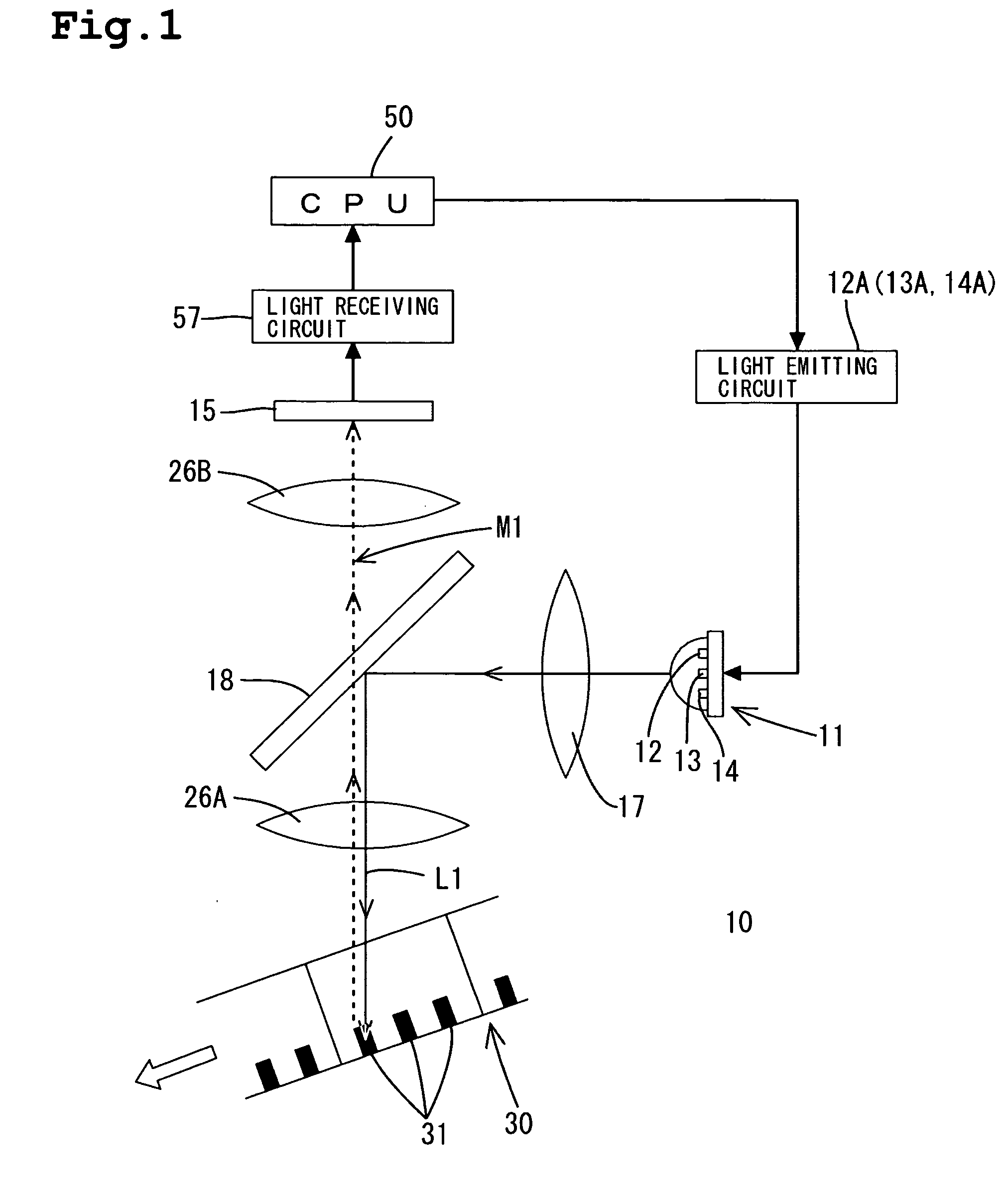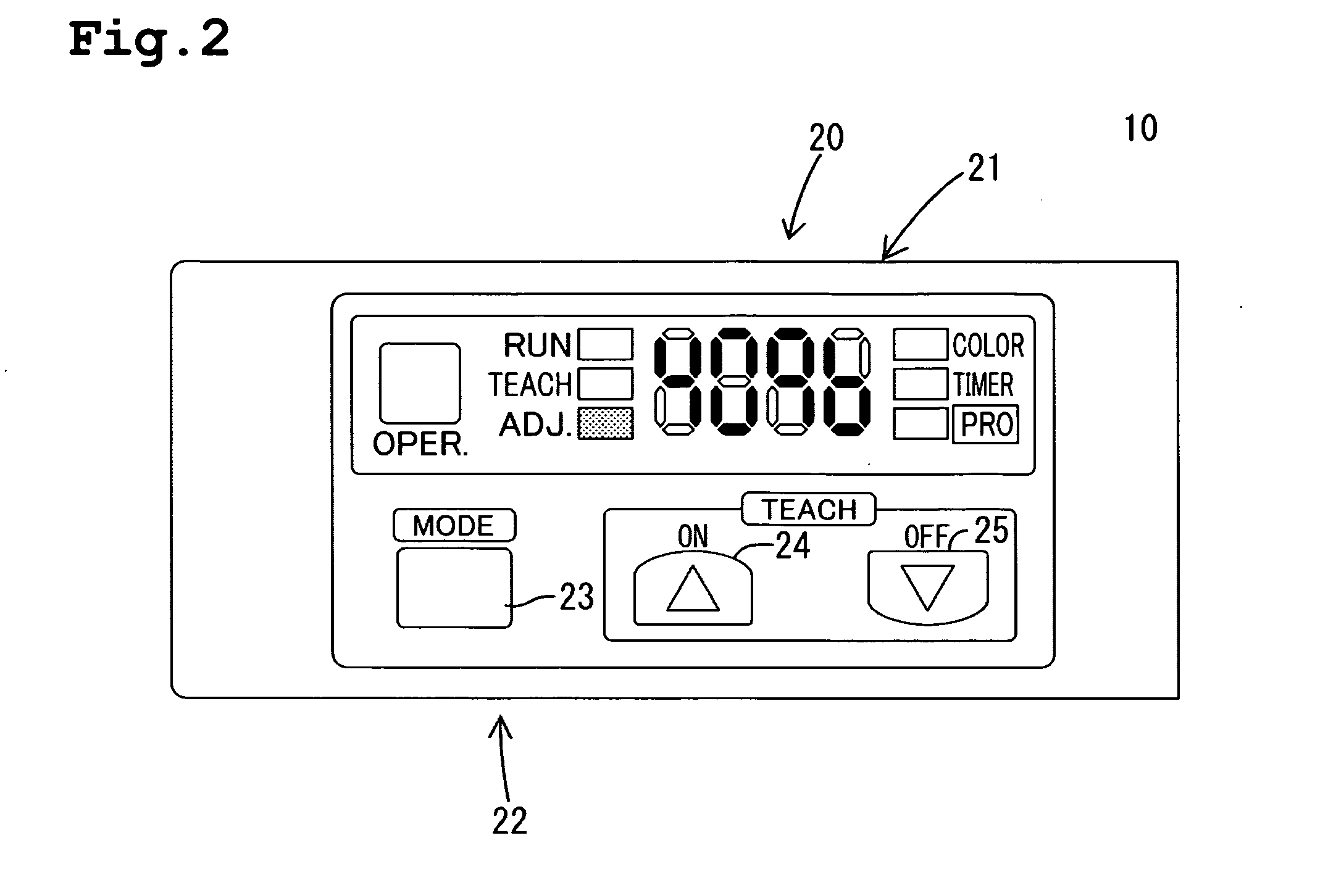Photoelectric sensor
a technology of photoelectric sensor and surface, applied in the field of photoelectric sensor, can solve the problem that the color of light that produces the largest difference between the reflected quantity of light from the mark and the surface of the object is not always the most suitable color, and achieve the effect of accurately and stably detecting the mark on the surface of the obj
- Summary
- Abstract
- Description
- Claims
- Application Information
AI Technical Summary
Benefits of technology
Problems solved by technology
Method used
Image
Examples
Embodiment Construction
[0034] One embodiment of the present invention will be described with reference to the accompanying drawings. Referring to FIG. 1, the photoelectric sensor 10 is shown as an embodiment of the invention. For example, the photoelectric sensor 10 may be used to detect a mark 31 on a sheet 30 (an object) conveyed by rollers (not shown). The photoelectric sensor 10 comprises a light-emitting element 11 (light-emitting device) emitting a light that shines (i.e., is irradiated or illuminated) onto the sheet 30 (the surface) and a light-receiving element 15 (light-receiving device) receiving light reflected from the sheet 30. The light-receiving element 15 generates a signal according to the quantity level of received light. The mark 31 is detected on the basis of the received light quantity level. In detection of the mark 31, an operating mode is adapted to be switched by an operator between a mark detecting mode and a color detecting mode. Consequently, two different types of detecting op...
PUM
 Login to View More
Login to View More Abstract
Description
Claims
Application Information
 Login to View More
Login to View More - R&D
- Intellectual Property
- Life Sciences
- Materials
- Tech Scout
- Unparalleled Data Quality
- Higher Quality Content
- 60% Fewer Hallucinations
Browse by: Latest US Patents, China's latest patents, Technical Efficacy Thesaurus, Application Domain, Technology Topic, Popular Technical Reports.
© 2025 PatSnap. All rights reserved.Legal|Privacy policy|Modern Slavery Act Transparency Statement|Sitemap|About US| Contact US: help@patsnap.com



